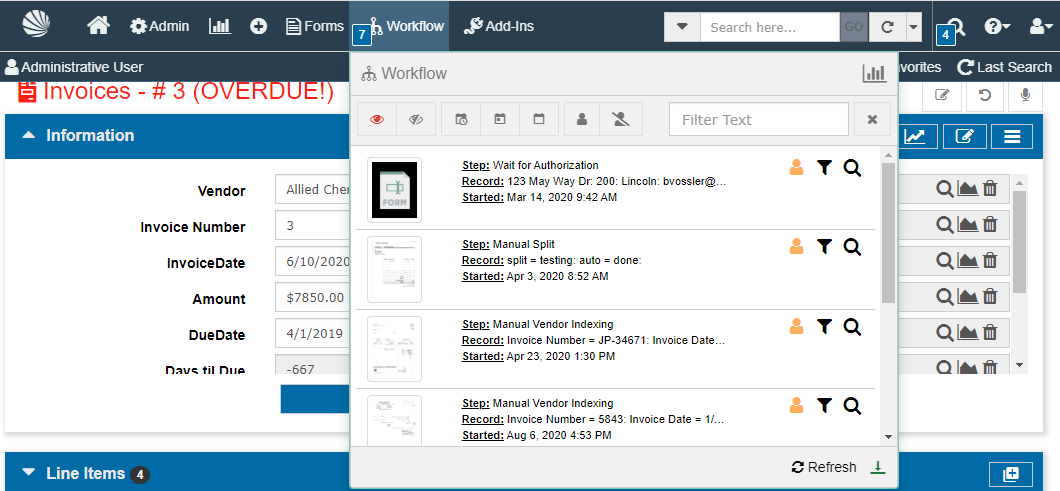Routing
There are two types of routing in DocMgt - Defined and Ad Hoc.
Defined routing is when you route information through the system and allow the predefined triggers to dictate where the information goes. This is useful for preset conditions and instances where the process is well defined.
Ad Hoc routing is when you route information to specific users and/or teams. This is useful when there is no preset condition or known set of processes to share the information.
There are 2 buttons on the Record screen that allow you to route. The first one is the Defined Routing button and the second is the Ad Hoc routing button.

When using Defined Routing there is nothing to do but verify that you do wish to route the Record. When using the Ad Hoc Routing you must select the user(s) and team(s) to whom to route the information. You can also select a Due Date when you expect a response as well as notes to share with the users.

Any Record routed to you will show up on your Home page as well as on the top tool bar in the work item list.

When you go into a routed Record you will have an extra panel in the Information Section that represents your options for the Work Item that is assigned to you. This panel will tell you when the work item is due, what options (buttons) you have available and will allow you to re-assign the work item to another user or users.

Once you are done with your work you then need to click one of the available buttons in the Record screen. This will advance the work item onto the next step.
** If you are an administrative user you will have extra buttons for each task to test where the workflow engine will route the current record when clicked and to force follow-up actions. You will also see a menu option to test a new route. These are great options for testing workflow and troubleshooting routing problems.
To learn more about work triggers see the Work Triggers help in the admin section of the manual.